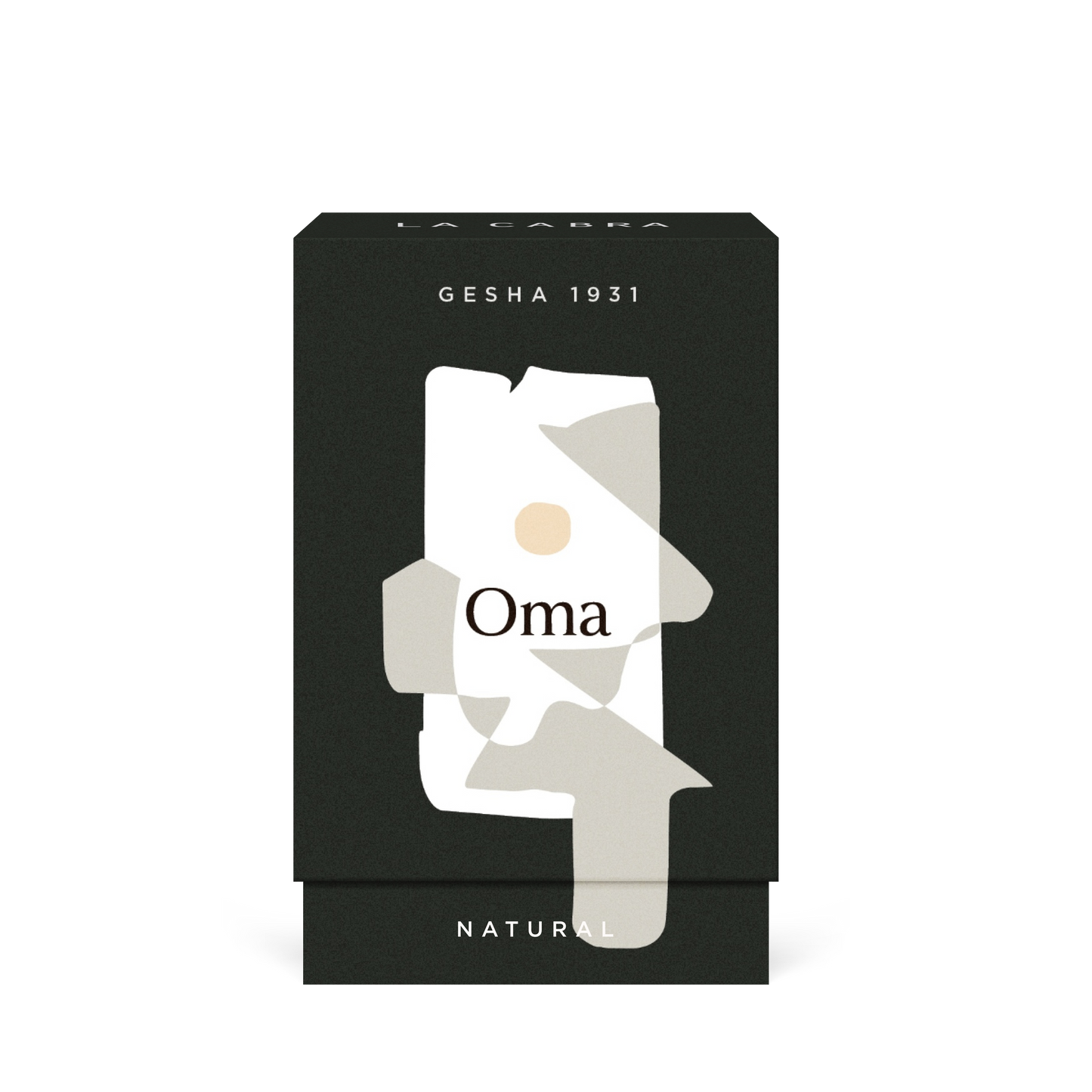
About
Coffee Expression The natural process adds rich complexity to the floral and fresh character Geisha coffees are known for.
Producer Produced by Gesha Village in the Bench Maji zone of Ethiopia.
100g (3.53oz) - Whole Bean Coffee / Both for filter and espresso
Brewing Advice
Water is one of the most critical components of an excellent coffee experience. We recommend using mineral water of a soft Total Dissolved Solids count, ideally below 150 ppm.
Rested coffee During the resting process, harsh and astringent flavors, which can even be perceived as a ‘roast’ character, soften out, allowing a clearer and brighter expression of the coffee’s character to shine.
We recommend resting our coffees for at least 10 days after the roast date, and we often find excellent results, especially for particularly dense coffees, beyond 6 weeks.
Brewing Our straightforward approach to coffee carries over into brewing. We recommend our roasted coffee for all brew methods, regardless of whether it is immersion, percolation or espresso. We believe that there is one correct way to roast a single coffee, roasting lightly, in such a way as to release its innate qualities and showcase its quality. Learn more about different brewing techniques and specific brew guides here.
Technical Data
Producer Gesha Village
Region Bench Maji
Altitude 2000 masl
Varietal Gesha 1931
Process Natural
Harvest January 2024
Shipping & Delivery
· Free shipping on US orders above $79 and on orders above $99 to Mexico and Canada
· Ships within 1-3 days from Brooklyn, New York
· Coffee is roasted to order

Gesha Village
Gesha Village lies in the Bench Maji zone of South Western Ethiopia, not far from the border with South Sudan. This area, in the high altitude humid forests where the Great Rift Valley passes into South Sudan, is thought to be the birthplace of Arabica coffee, and is still home to great genetic diversity. Here at Gesha Village however, one varietal sits in the spotlight; Geisha.
Adam Overton and Rachel Samuel first travelled to Ethiopia in 2007 to make a documentary about its unique method of coffee production, and fell in love with the country. They decided during that short trip that they would eventually move to the country to start producing coffee themselves. They found a 471 hectare plot of land in Bench Maji, further west than we normally find specialty coffee in Ethiopia, in a remote area of untouched high altitude forest. The wild forest remained as coffee was planted, maintaining as much as possible of the biodiversity so crucial to the Ethiopian mode of production, while also providing ample shade for the fragile Geisha trees.
-v1729777572857.jpg?1574x2361)
The Gesha 1931 varietal was selected for its similarity to the Panamanian Geisha strain.
This isn’t just any Geisha however. Gesha Village is located only around 20 km from the Gori Gesha forest, where the hallowed varietal of the same name was first isolated by British researchers in 1931. When preparing Gesha Village, the team behind the project trekked into the forest and gathered seeds from the wild coffee trees growing there, selecting those that genetically resembled the original 1931 expedition Geisha.
-min-v1729777574089.jpg?3764x4705)
-(1)-(1)-v1729777578889.jpg?4584x3739)
Oma
This lot of Gesha 1931 was grown on the Oma plot of Gesha Village, reaching up to 2040 masl and producing some of the most aromatic coffees on the farm. The cherries were harvested at the end of January 2024, then dried in a careful natural process, using African raised beds. The coffee was dried in very thin layers for the first few days, in order to quickly reduce the moisture content so that almost no fermentation occurs on the beds. The layers are then slowly built up and the coffee is moved to dry under shade from day 10 onwards, slowing the overall drying time. This reduces the chance of damage to the coffee’s cell structure, meaning the coffee tastes its best for much longer after harvest, and is also one of the reasons why such a clean cup is maintained.
-(1)-v1729777575480.jpg?3706x4633)
This incredible raw material, grown in its native wild forest, combined with careful processing, creates an intense yet clean and delicate flavour experience. Clear jasmine aromatics are followed by stone fruit in the cup, with a deep sugary sweetness tied up by a black tea finish.
This year we also purchased another lot from the Oma plot in Gesha Village, produced using an experimental Mossto Anaerobic fermentation, read more by following the link below.
-(1)-v1729777576833.jpg?4274x2849)

